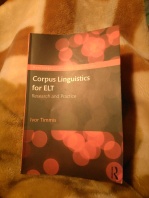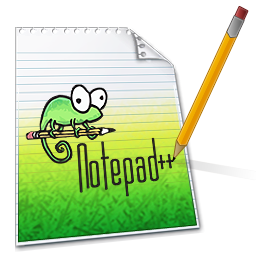I’m enjoying a Saturday lie-in with Corpus Linguistics for ELT: Research and Practice by Ivor Timmis, a great new book which arrived in my mail just yesterday. It made me think of a quick exercise that can be used as a follow-up to any reading or listening activity.  It’s really simple, but since it takes a bit of technology to create it quickly, I thought I’d write a quick post.
It’s really simple, but since it takes a bit of technology to create it quickly, I thought I’d write a quick post.
The book overviews the insights into language achieved by corpus linguistics and discusses their implications for the ELT classroom. I’m currently reading the chapter called Corpus research and grammar, and one of the main topics of the chapter is to what extent the frequency of a linguistic feature should influence the amount of time devoted to teaching that feature. The author gives a number of very interesting examples of frequent features that tend to be underrepresented, over-represented or misrepresented in coursebooks (examples include ‘though’, which is often used in speaking to signal soft disagreement, and conditionals, which more often than not do not fall under ‘the zero, first, second and third’ two-part conditional structures, which most coursebooks almost exclusively focus on).
One striking fact mentioned in this chapter comes from an article by Biber and Reppern. Apparently, just 12 lexical verbs (say, get, go, know, think, see, make, come, take, want, give, and mean) account for 45% of lexical verbs used in conversation. Biber and Reppern suggest that, since they are so frequently used in speech, these verbs require more attention in class than they currently do, judging by the coursebooks that they reviewed, and that these verbs should be used more to exemplify various grammar structures.
I’m thinking of giving my students an occasional gap-fill exercise based on the reading and listening texts that we are working on, with these verbs gapped out (their frequency is said to be higher in conversation than fiction, news and academic texts, so probably the task will work best with listening transcripts and informal writing, e.g. forum posts).
Finding and replacing the various forms of these verbs could be time-consuming, but there are tools in which one can make such a gap-fill exercise in one click. The first one is a free nifty little text editor called Notepad++.
 The trick is that the editor uses so-called ‘regular expressions’ to allow you to search for more than one expression at once. So, if you open your text file in Notepad++ and type in (some|any) in the search box, you’ll see all occurrences of both words in your file and will be able to replace them with gaps in one click. The following search will find all verb forms of the 12 verbs mentioned above:
The trick is that the editor uses so-called ‘regular expressions’ to allow you to search for more than one expression at once. So, if you open your text file in Notepad++ and type in (some|any) in the search box, you’ll see all occurrences of both words in your file and will be able to replace them with gaps in one click. The following search will find all verb forms of the 12 verbs mentioned above:
\b(say|said|get|got|go(e)?|went|gone|know|knew|known|think|thought|see|saw|seen|mak(e)?|made|com(e)?|came|tak(e)?|took|taken|want|giv(e)?|gave|given|mean|meant)(ed|ing|s)?\b
(If you want to know why this expression matches all forms of those verbs, scroll to the bottom of the post).
Here’s how to create a gap-fill using Notepad++ in a bit more detail:
- Insert your text into Notepad++, select the text (on my system, by pressing CTRL+A), and open the search window by pressing CTRL+H.
- In the search window, click the ‘Mark’ tab. Ensure that Search mode is set to ‘Regular expressions’ and that the ‘in selection’ check box is checked. Insert this into the ‘Find what’ box:
\b(say|said|get|got|go(e)?|went|gone|know|knew|known|think|thought|see|saw|seen|mak(e)?|made|com(e)?|came|tak(e)?|took|taken|want|giv(e)?|gave|given|mean|meant)(ed|ing|s)?\bClick ‘Mark all’ to highlight all occurrences of these words, so that you can look through them and check how many there are and how they’re used, and that nothing unrelated was accidentally found. In the example below there are 14 matches. - Go to the ‘Replace’ tab, type in ‘________’ into the ‘Replace with’ box and click ‘Replace all’.

- Finally, insert the gap-filled text alongside the initial text into a word document. Voilà!
As an alternative to installing Notepad++, use the web-based Find and Replace tool – thanks to Mura Nava for the heads up! It’s even quicker and you don’t have to install it on your computer (one possible drawback is that you can’t highlight and check what you’re going to replace).
I’ve tried this activity with a few transcripts from youtube, and I found it doable and enjoyable. I think I want to try to use it on a regular basis with my Upper-Intermediate students, encouraging them to note down interesting chunks with those verbs.
Let me know what you think.
References
Biber, D. and Reppern, R. (2002) What does frequency have to do with grammar teaching? Studies in Second Language Acquisition 24/2: 199-208
Timmis, I. (2015) Corpus Linguistics for ELT: Research and Practice. Routledge
A bit on regular expressions
If you want to create your own regular expression searches, you might like to figure out how the one in this post works.
- | stands for ‘or’. So (say|said) will return all present/past/past participle forms of ‘say’.
- ? stands for ‘this part is optional’. So, (say|said)(s|ing)? will return all the forms from the previous example, plus ‘says’, ‘saying’, ‘saids’, and ‘saiding’. Only the first two words exist, but that doesn’t matter.
- Some instances might be ‘false positives’. For example, ‘essays’ contains ‘say’, but that’s clearly not what we need. So, we need a way to show the tool that we’re only looking for full words. This is done by wrapping the search expression into ‘\b’ tags (they stand for ‘word boundary’).
So, in order to find all verb forms, I list all present and irregular forms, separating them by ‘or’, add possible endings (ed|ing|s)?, account for the fact that (e) will disappear before ing (hence, mak(e)?) and add \b at the beginning and the end:
\b(say|said|get|got|go(e)?|went|gone|know|knew|known|think|thought|see|saw|seen|mak(e)?|made|com(e)?|came|tak(e)?|took|taken|want|giv(e)?|gave|given|mean|meant)(ed|ing|s)?\b








[…] to inspire a post this afternoon, and I found a really interesting article at ELT Stories, Practicing the top priority lexis – a quick and dirty tip. The author, Olya Sergeeva, shared her thoughts about the book Corpus Linguistics for ELT: […]
[…] didn’t follow Olga Sergeeva’s instructions exactly because I couldn’t make sense out of her regular expression string. I just searched […]
Hello Nancy,
Thanks for your insight! Just a quick tip regarding present simple and regular expressions. You can write a very simple string: just put all the verb forms into parentheses and separate them by vertical bars: (say|says|get|gets|go|goes|know|knows|think|thinks|see|sees|make|makes|come|comes|take|takes|want|wants|give|gives|mean|means)
Re your point that 12 verbs may be too much for a close exercise, I agree – that’s why I put the gapped text and the original version side by side, so that the students can take a guess, and then immediately check if they were right (and maybe circle the expressions that they didn’t get right). This way they get to notice the collocations/fixed expressions but avoid the frustration of ‘having to know the correct answers’. Also, I think it’s important to make the purpose of the task crystal clear (noticing expressions with top English verbs, NOT testing them).
Olya
[…] had written about the cloze activity I did made using Olga Sergeeva’s instructions. We actually did it this week in class, and the students were able to read the text and insert […]